Create biogas in your own back yard from organic waste!
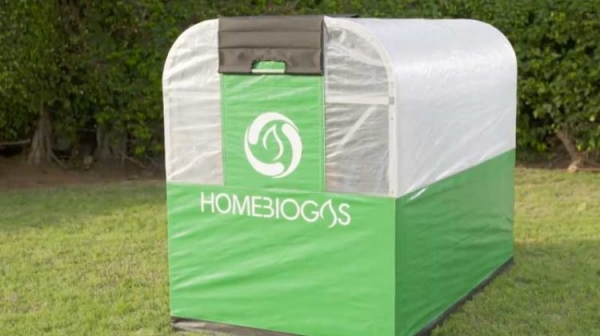
A revolutionary household biogas system turns organic waste into clean biogas for cooking
A revolutionary household biogas system turns organic waste into clean biogas for cooking
HomeBiogas is an affordable and compact anaerobic digester that converts organic waste into cooking gas and liquid fertilizer. It was developed by an Israeli startup, which managed to advance the already known technology of large-scale biogas power plants to a micro scale level which can be used for household use. Their Indiegogo crowd-funding campaign has already ended and reached 200% of its initial goal last January, but they continue to offer the product lower than the retail price. According to their timeline, the first shipments will begin the following August.
How does it work
Organic waste such as food scraps (even meat), kitchen trash and pet manure is fed into the system’s digester tank which is filled with water. In the absence of oxygen, the anaerobic microorganisms found in the water biodegrade the organic matter and digest it, resulting to biogas creation.
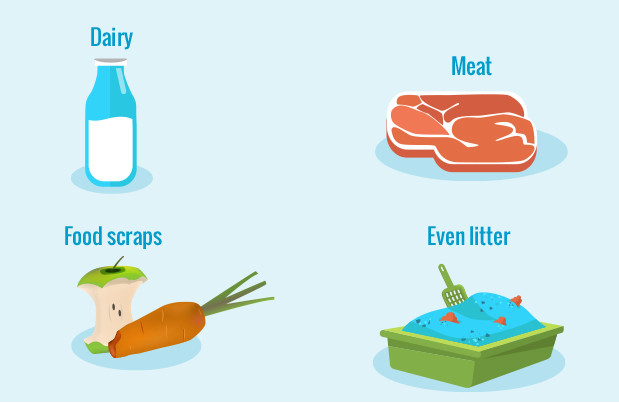
At the other end of the system, the clean biogas (approx. 65% CH4, 35% CO2) and fertilizer are emitted. A special mechanism regulates the gas pressure, enabling the gas to be delivered at a stable and predictable pressure, as required for reliable cooking or heating (devices compatible with low pressure biogas are needed). The built-in tank stores 400 litres of gas. Any additional gas generated, is automatically released and dissipates into the atmosphere. The biofertilizer can be used in gardens or for other vegetation, including hydroponic systems with detached beds.
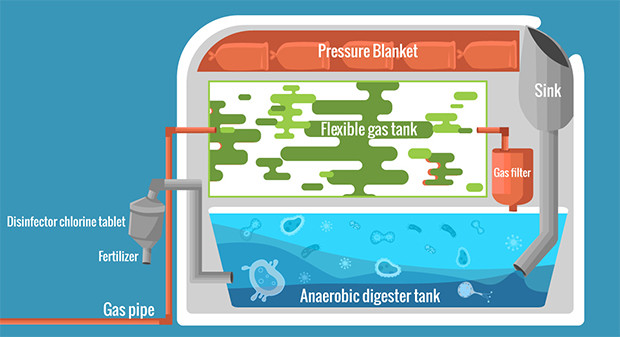
According to the company, HomeBiogas can process up to 6 litres a day of food waste or up to 15 litres a day of animal manure. Every litre of food waste produces about 200 litres of gas, or the amount needed to cooking for one hour over a high flame. On average, HomeBiogas can produce clean gas for up to 3 hours of cooking and 5-10 litres of clean natural liquid fertilizer daily. A minimum ambient average day/night temperature of 17°C (66°F) is necessary for the system’s operation.
Media
Want to read more like this story?
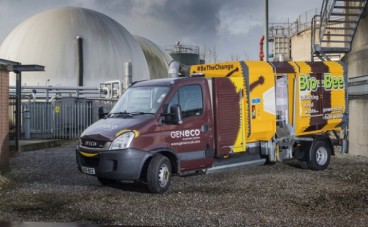
BioBee: UK’s first vehicle truck that both collects and runs on commercial food waste
Oct, 31, 2017 | NewsIt was named after bees, which collect natural resources and make renewable and nutritious products...

Hybrid biomass and solar energy system for water desalination
Sep, 12, 2017 | NewsThe integrated desalination system could provide drinking water to poor and rural communities at a l...
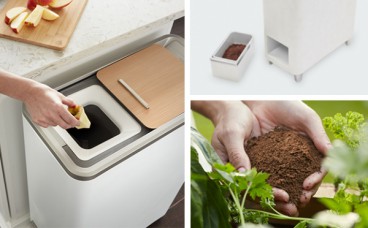
Innovative Food Recycler Turns Leftovers Into Fertilizer in just 24 Hours
Jan, 18, 2017 | NewsAn easy-to-use solution that ensures less food ends up in the landfill An easy-to-use solution th...
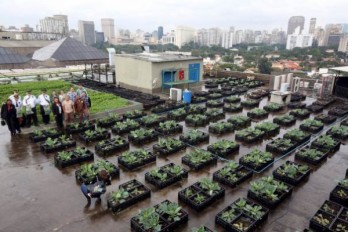
Shopping Mall in Brazil recycles all food waste by growing vegetables on its roof
Dec, 23, 2016 | NewsThe vegetables are then harvested and distributed to the mall's employees The vegetables are then...

A Californian company can turn organic waste into fully biodegradable plastic
Jan, 10, 2018 | NewsThe developed product can be used to make durables, bags, water bottles, cutlery etc The developed...
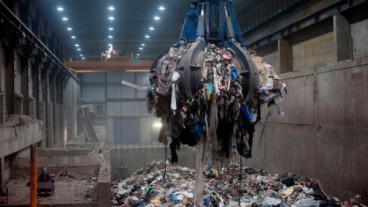
Due to Sweden’s revolutionary recycling program, the country needs to import 800,000 tns of waste annually to feed its 32 waste-to-energy plants
Oct, 11, 2017 | NewsThe energy goes into a national heating network to heat homes throughout the winter and is also used...

New EU legislation on waste management
Jun, 08, 2018 | NewsBased on the principles of circular economy, the new guidelines aim for a drastic reduction of landf...

A Danish wastewater treatment plant produces more energy than it consumes
Jan, 26, 2017 | NewsMarselisborg WWTP has energy self-sufficiency above 100 % and the plant is in fact a power station...

This waste incinerator sets a new capacity record!
Mar, 03, 2016 | NewsLocated in Shenzhen, China, it will be ready by 2020 andits capacity will reach 5000 tn/day! Loca...
Trending

Vertical gardens in Mexico City to combat pollution

Saudi Park Closed After 360 Big Pendulum Ride Crashes to Ground, 23 injured

Characteristics of Load Bearing Masonry Construction

Taipei 101’s impressive tuned mass damper

Dutch greenhouses have revolutionized modern farming

Federal court rules Biden’s offshore drilling ban unlawful


